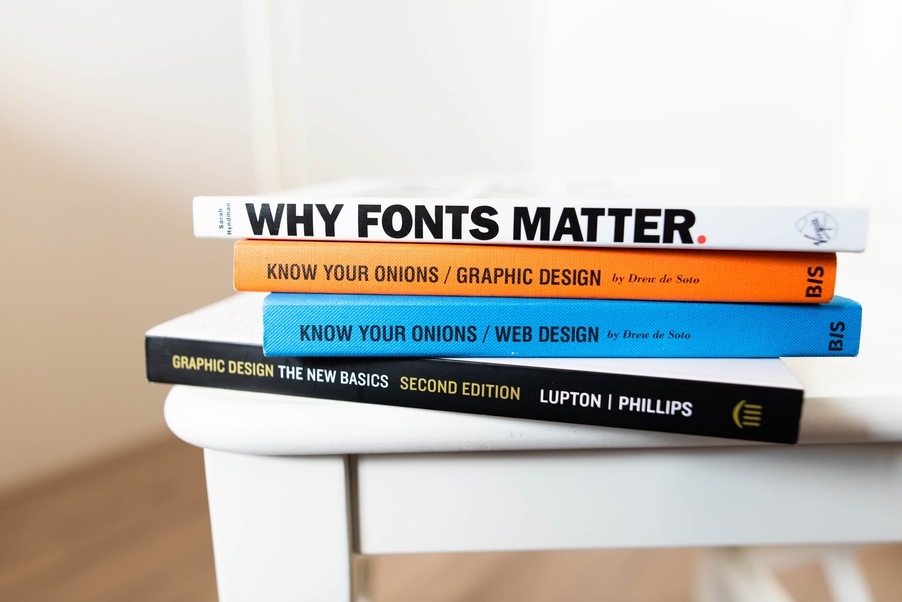
The 'how & why' behind clean, accessible and genuine design.
Boutique creative studio La Mesa, founded by Colombian and Lebanese trio Oscar Motta, Co-Founder & Managing Partner; Farida Natour, Co-Founder & Design Director; and Rana Chehade, Co-Founder & Art Director, is a homegrown UAE company focused on progressive storytelling. Emphasizing a people-first approach within their suite of services including strategy, branding and graphic design through to digital marketing, content creation, performance marketing and online & offline publishing, La Mesa speaks with Katrina Kufer about the necessity of powerful imagery today.
La Mesa experiments with creating meaningful experiences in a hyper-dynamic visual landscape that requires—but may not always provide—the intelligently soothing tempering effect of genuine storytelling. It is one thing to create a memorable message that accosts consumers, but another to build one that lasts and integrates into daily schemata.
User experience design is key to La Mesa’s philosophy, which is deployed by its clients such as Google, Xpence, Dubai Chamber, IEQ Technologies, and more. Employing a thorough process, beginning with a brand audit, competitive analysis and audience mapping, La Mesa sees clients’ business goals through to full implementation by creating the experience, defining the strategy, architecture and personality, and then doing a 360-roll out including collaterals, digital and internal engagement.
But what grounds their ambition is a fresh, clean, accessible design style that meets a contemporary take on broad-spectrum application. Visual clarity without gimmicks and novelty defines La Mesa’s projects, stemming from a firm understanding of the power of imagery.
“Branding is the face of a brand, a company, a service, a product, or even a person,” explains Motta. “It is how it is perceived by peers, the industry and larger society.” The evolution of the digital industry over the last 20 years has caused significant change, with Motta noting that content distribution and creation has grown to become the number one asset for companies alongside their reputations. In fact, studies have shown 78% of companies invest in a team of one-to-three content specialists.
“Branding is the face of a brand, a company, a service, a product, or even a person,” explains Motta. “It is how it is perceived by peers, the industry and larger society.”
In building a brand or the relationship between a brand and its users, impactful imagery is essential to creating memorable experiences. “When La Mesa is creating a brand, we usually think in function of what the experiences of the brand and the company and service will be when facing their final users, clients or partners,” he says. For The Healthy Home, La Mesa focused on brand uplift and guidelines for the UAE’s leading sanitation and cleaning company, developing their positioning execution and marketing vertical for franchising. La Mesa visually elevated mundane tasks (disinfection) or repellent facts (the presence of a person in a room can add 37 million bacteria to the air hourly) to convey a calming and reassuring message through tone, palette and non-threatening or panic-inducing imagery. It’s work for the University of Wollongong meanwhile embraces punchy design and taglines—“From Taking Selfies to an Academy Award Winning Director”—under an umbrella of “How will you #changeyourfuture today?” to revitalize academia’s dusty connotations.
Beyond the foundational elements of color, typography and other core design components, La Mesa strives to activate a wider, deeper thought process in experience creation. “Storytelling became something that is very related and tied to branding in the crowded reality that we’re living in due to digital media and distribution, which impacts content creation, brand creation and brand relationships,” observes Motta. “In the same way, powerful imagery is critical from the mental element of successful branding because it helps build that strong foundation for the storytelling that the brand wants to convey, aligned with purpose, core values, products or services the company is trying to sell.”
Commanding visuals need to also be considered in relation to current realities, in terms of access to information and transparency, and how that relates to each company’s mission. “That is why powerful imagery plays such an important role in telling a story and portrayal of a genuine image towards society,” asserts Motta, adding that consumers are “pretty savvy” in being able to identify if a brand is genuine or not. “We like to say that brands are not a logo, but the creation of a DNA that has this element embedded to push forward into fulfilling a purpose that is larger than the brand itself.”

About The Editor
Katrina – arts, culture and lifestyle writer and editor (BFA Fine Arts, Parsons the New School for Design; MA Contemporary Art, Sotheby’s Institute of Art) – has lived in 16 countries and written for a multitude of prestigious publications in the MENA region. Based in Dubai, Kufer is interested in observing new environments and exploring cross and inter-cultural connections.



